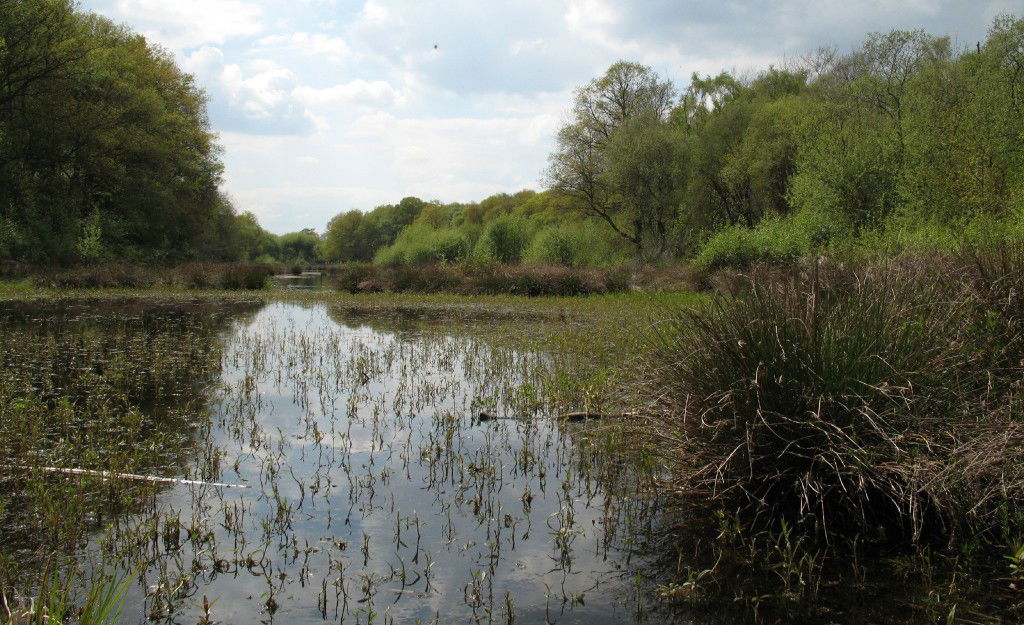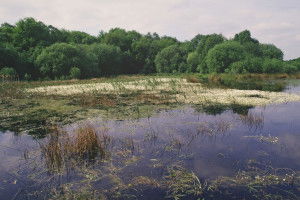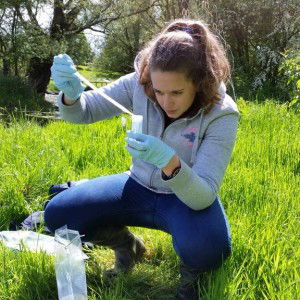Flagship Focus: Brown Moss 2016
25th February 2016
Every month we are featuring one the many wonderful pond sites supported by our Flagship Pond project. Thanks to a grant from the Heritage Lottery Fund, we are able to help the people caring for some of the best pond sites in the country, making sure their special plants and animals have a secure future.
This month People, Ponds & Water Project Officer for Central England, Pete Case, introduces a special site in Shropshire.
 A pond at Brown Moss (c) Nigel Jones 2010
A pond at Brown Moss (c) Nigel Jones 2010
Brown Moss is a complex of ponds, marsh, heathland and bog in north Shropshire close to the town of Whitchurch. The relatively small site is part of the much wider RAMSAR designated Meres and Mosses landscape, formed by glacial retreat during the last ice age. Brown Moss was known as one of the richest sites in Shropshire for plants with over 200 species recorded, gaining designation as a SAC (Special Area of Conservation) in 1992 mainly for the presence of nationally rare Floating Water Plantain Luronium natans.
 Brown Moss in the 1990s (c) Natural England
Brown Moss in the 1990s (c) Natural England
Sadly in recent years, Luronium, along with other priority species such as Pillwort, Lesser Water Plantain and Tubular Water-dropwort have disappeared from the site. A decline perhaps associated with a loss of traditional management using grazing animals. The heathland and woodland in which the ponds lie is common land where historically livestock would have grazed, keeping the site open and creating the perfect condition for a diverse range of wetland plants. The site still plays host to some important plants including Orange Foxtail, Lesser Marshwort and the rare liverwort, Channelled Crystalwort Riccia canaliculata. The good news is that grazing is back on the agenda with plans in place to introduce animals to the site once again. Winter 2015 also saw a significant effort to clear trees and scrub from the margins of the ponds, funded by Natural England. Scraping back and re-profiling of a number of the ponds is also planned for next year which it is hoped will bring back some of the rare species that are able to persist for long periods buried in the seedbank.
 A pool at Brown Moss in 2015 (c) Mags Cousins/Natural England
A pool at Brown Moss in 2015 (c) Mags Cousins/Natural England
Freshwater Habitats Trust have long been aware of the importance of Brown Moss: a single pond at the site was chosen to be surveyed as part of the National Pond Survey (NPS) in 1997. This pond was resurveyed by us in summer 2015 and showed that, remarkably, plant species diversity had increased in the intervening 18 year period. Other good news is that our initial water chemistry tests reveal that water quality in the ponds is generally very good, with low nitrate and phosphate levels on all but the main pond. Furthermore the recent discovery of the rare Mud Snail Omphiscola glabra, a freshwater mollusc with restricted distribution, is also encouraging news for the site.
This summer we are offering two joint training days at Brown Moss in conjunction with the Meres and Mosses Landscape Partnership. Firstly a Water Blitz on Saturday May 7th: testing all ponds for presence of great crested newts using eDNA technology and at the same time testing and mapping water chemistry across the whole site. This will be followed by a wetland plant training day on Saturday 16th July led by local ecologist and Field Studies Council tutor John Handley introducing volunteers to the wide range of wetland plants on site with a view to establishing a recording group to monitor key species into the future.
Both events are free but places are limited. Please contact Pete for further details on pcase@freshwaterhabitats.org.uk
Want to know more?
- Read more about the Flagship Ponds project
- Learn about other parts of our People, Ponds & Water project, and how you can get involved
- Find out how your support can make a difference for freshwater wildlife
- Join the mailing list to get articles like this, and more, direct to your inbox

